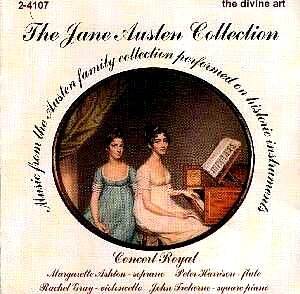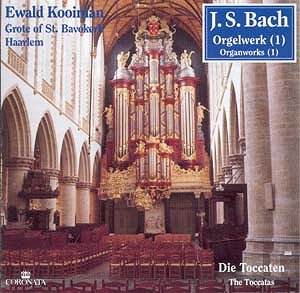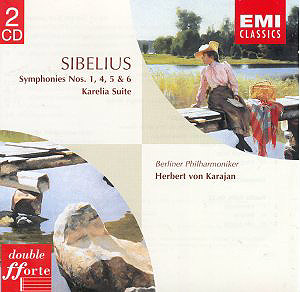 Composer: Various
Composer: Various
Works: The Jane Austen Collection
Performers: Margarette Ashton (soprano), Peter Harrison (flute), Rachel Gray (violoncello), John Treherne (square piano)
Recording: Westfield Farm, Sheriff Hutton, North Yorkshire. Oct 1999 and February 2000 DDD
Label: Divine Art Ltd. 2 -4107
The Jane Austen Collection, curated by the ensemble Concert Royal, offers an intriguing glimpse into the musical tastes of Jane Austen and her contemporaries. This recording intersperses selections from Austen’s own collection of sheet music with traditional and arranged songs, capturing the essence of late 18th-century British music that Austen so cherished. The absence of the titans like Beethoven and Mozart is notable, yet the album compensates with delightful works by Haydn, Pleyel, and lesser-known composers such as Thomas Augustine Arne and Samuel Webbe, effectively illuminating the period’s musical landscape.
Margarette Ashton’s soprano shines throughout the collection, characterized by her clarity and expressiveness. Her interpretation of the rarer songs, such as Webbe’s “The Mansion of Peace” and Hook’s “The Wedding Day,” showcases her ability to navigate the delicate emotional contours of these works. Ashton’s delivery is both poised and nuanced, enhancing the lyrical content with an understanding that seems deeply rooted in the historical context. The instrumental support provided by Peter Harrison (flute), Rachel Gray (violoncello), and John Treherne (square piano) is equally commendable. Treherne’s performance on the Broadwood square piano, an instrument akin to that which Jane Fairfax played in “Emma,” adds authenticity to the recording, allowing the ensemble to evoke the intimate salon atmosphere prevalent in Austen’s circles.
Each performer contributes significantly to the overall interpretation. Harrison’s flute lines, particularly in the traditional arrangements, possess a lyrical grace that complements Ashton’s vocals without overshadowing them. Gray’s cello provides a warm foundation, and her handling of the Stephen Paxton arrangement notably draws attention to the traditional Scottish influences permeating the collection. The ensemble’s interplay reflects a keen understanding of period performance practices, with a lightness of touch that respects the stylistic nuances of the era.
The recording quality deserves mention, as it successfully captures the intimate ambiance of the performance space while maintaining clarity among the instruments. The engineering allows for a balanced sound that showcases individual voices within the ensemble while preserving the cohesive nature of the work. However, at just under 48 minutes, the album feels somewhat short; a few additional selections could have further enriched the listening experience and provided a more comprehensive survey of the repertoire.
This collection stands out not only as a testament to Jane Austen’s musical interests but also as an engaging exploration of early 19th-century British music. The thoughtful selections and skilled performances paint a vivid picture of the aesthetic values that permeated Austen’s world. For those intrigued by the intersection of literature and music, this recording offers a compelling auditory experience, shedding light on the cultural milieu that shaped Austen’s literary voice.



